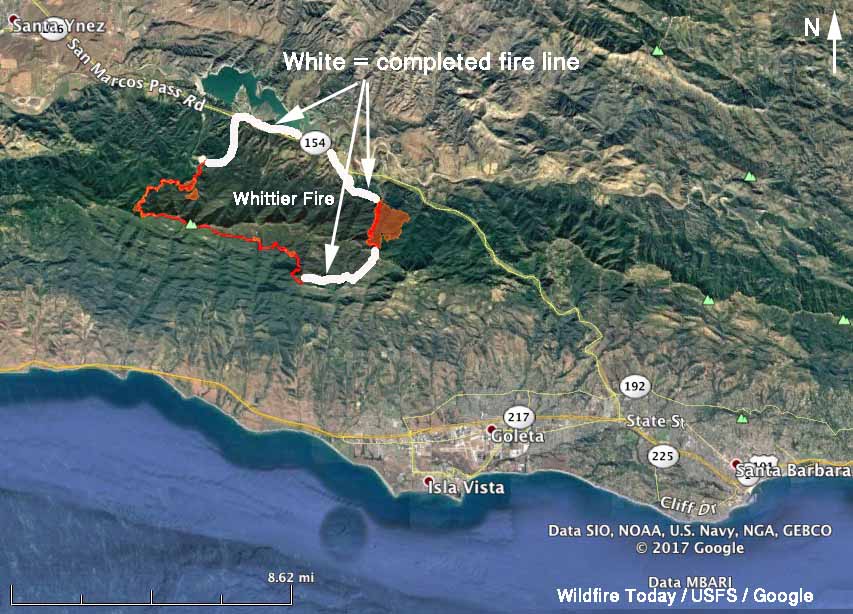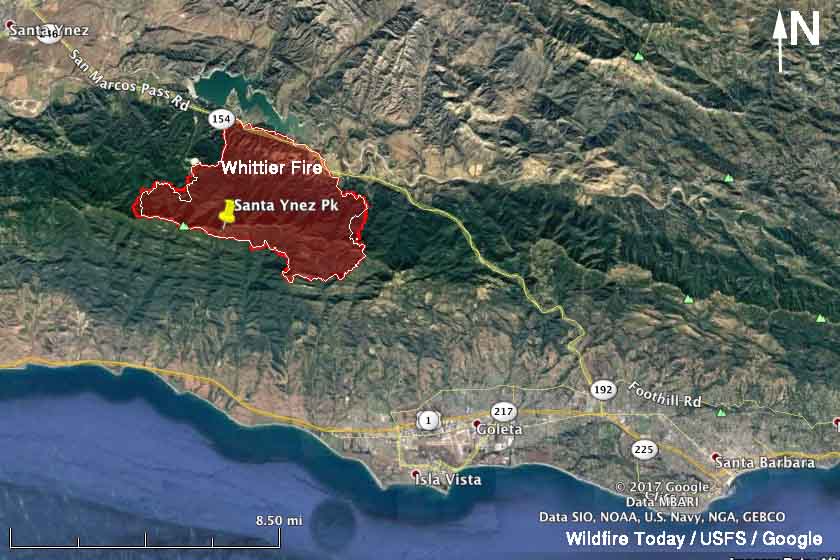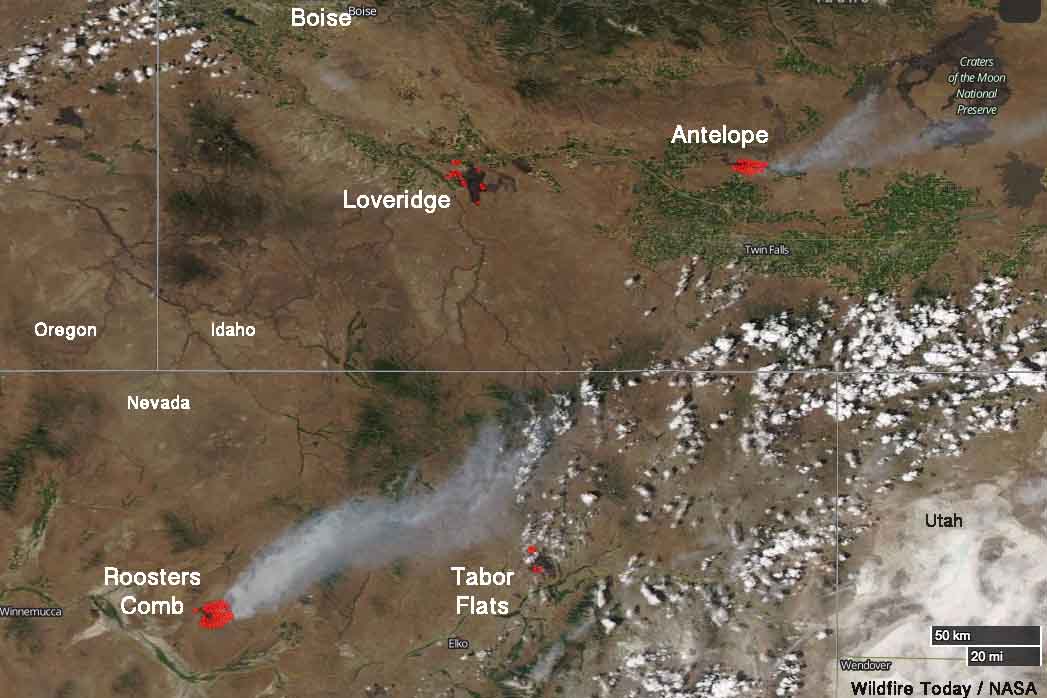Above: A 3-D map of the Whittier Fire looking southeast. The data was updated at 7:30 p.m. PDT July 11, 2017. The areas shaded in light red were burning very actively when the fire was mapped.
(Originally published at 7:52 a.m. PDT July 1, 2017)
Firefighters have completed a containment line around almost half of the Whittier Fire northwest of Goleta, California, but it was still very active in some areas Tuesday. On the east side it spread into Hot Springs Canyon putting up a large plume of smoke that got the attention of residents in Goleta and Santa Barbara. But as of 7:30 p.m. on Tuesday the east side was still about half a mile away from San Marcos Pass Road which has served as a barrier on the north side.
By 7:30 p.m. Tuesday it had burned 11,920 acres.

A containment line is complete on the northwest side from San Marcos Pass Road up to the rock quarry, but beyond that, going up the slope, the terrain is much more steep and complex. Firefighters are scouting that area up to the ridge, hoping to find a route for a line.
Wednesday morning a deeper marine layer put a damper on fire activity. Later in the day the forecast for the north side of the fire calls for mostly sunny skies, 88 degrees, 37 percent relative humidity, and winds at 8 mph gusting to 12 shifting from the southeast to the southwest and eventually out of the west.
All of the articles we have written about the fire are tagged “Whittier Fire” and can be found here, with the most recent at the top.









